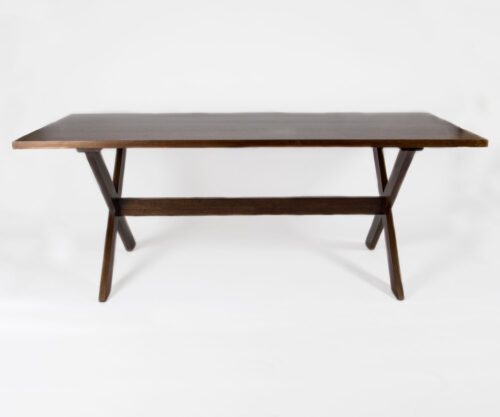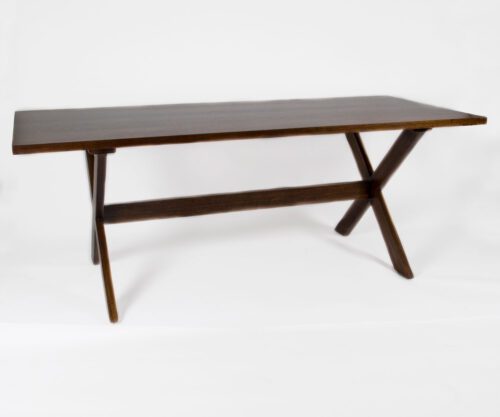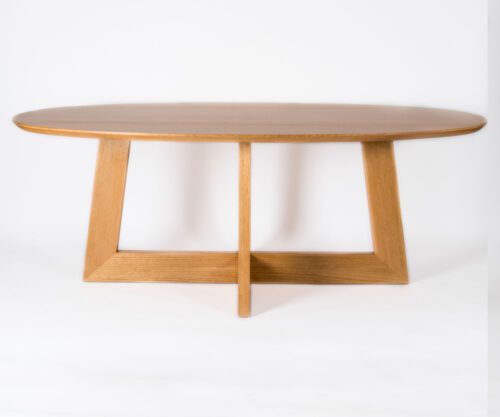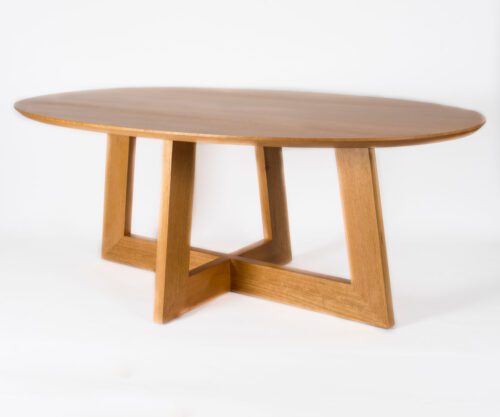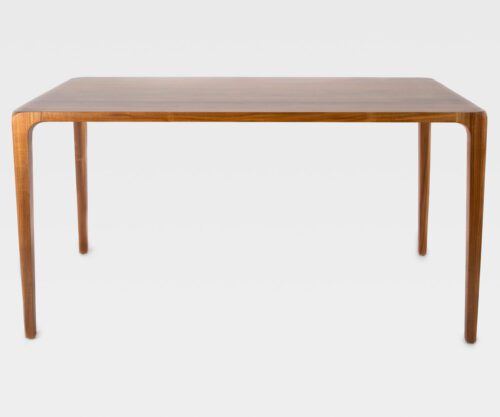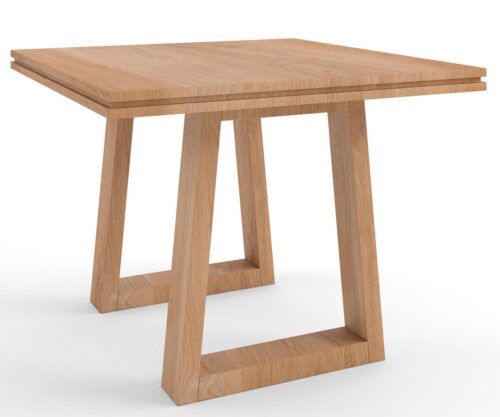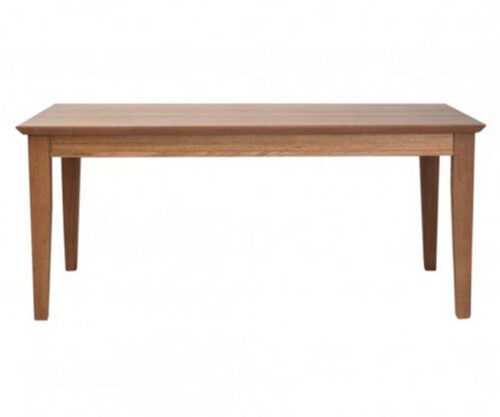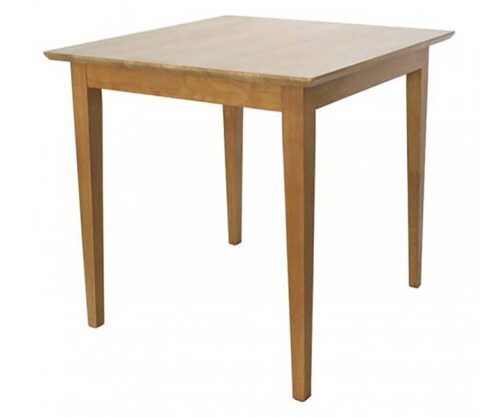Choosing the Ideal Australian Made Dining Table for Aged Care Facilities: A Comprehensive Guide

In Australian aged care facilities, the dining area acts as a hub for residents to eat, socialise, and engage in various activities. Among the furniture pieces, the dining table holds a pivotal role in shaping this communal environment. However, selecting the perfect Australian made dining table for an aged care facility requires careful deliberation over several factors, including functionality, comfort, aesthetics, and durability. This guide is designed to walk you through the process and help you make an informed choice that best suits the needs of your residents.
Appreciating the Significance of the Dining Table in Aged Care
Before we go any further, it’s important to understand why the dining table holds such significance in aged care settings. Meal times often serve as a highlight for many residents, offering opportunities for social interaction and cognitive engagement. An appropriately selected dining table can enhance these experiences by fostering a sense of community and improving the overall quality of life for residents.
Further, the right dining table can also contribute to the physical well-being of residents. Ergonomically designed tables that cater to the specific needs of elderly adults can encourage better posture, reduce the risk of falls, and make meal times more comfortable and enjoyable.
Factors to Consider When Choosing an Australian Made Dining Table for Aged Care Facilities
- Functionality: The primary purpose of a dining table in an aged care setting is to provide a comfortable space for eating and socialising. Therefore, it should be at an appropriate height and size to accommodate wheelchairs and walkers, with ample legroom for all users. Tables with adjustable heights can offer additional flexibility, catering to residents with varying needs.
- Durability: Considering the heavy usage that dining tables in aged care facilities are subjected to, durability is a key factor to consider. Opt for Australian made tables constructed from high-quality materials that can withstand regular cleaning, spills, and everyday wear and tear. Also, seek out tables with robust construction and a good warranty.
- Aesthetics: While functionality and durability are vital, aesthetics should not be ignored. A visually appealing dining area can enhance meal times and stimulate appetite. Choose a table that complements the overall interior design of the facility and creates a warm, inviting atmosphere.
- Accessibility: Accessibility is another crucial aspect. Residents should be able to easily approach and leave the table. This may involve choosing a table with a pedestal base for easier wheelchair access or opting for a table with rounded corners to prevent injuries.
- Ergonomic Design: The dining table should be designed with the comfort and physical needs of the elderly in mind. The height should allow for easy sitting and rising, and there should be ample leg room.
- Material Safety: Materials should be non-toxic and safe for prolonged contact. It’s also important to choose a table that doesn’t have sharp edges or corners to prevent injuries.
- Easy Cleaning: Aged care facilities need to maintain high levels of hygiene. So, opt for a table made from materials that can be easily cleaned and disinfected, such as metal, glass or sealed wood.
- Adaptability: A dining table in an aged care setting might need to serve multiple purposes – from dining to activities and crafts. Therefore, choosing a table that can adapt to different uses is key.
- Australian Standards: Ensure the dining table meets Australian standards for safety and quality. Buying locally made furniture often guarantees adherence to these standards.
- Fitting the Space: Consider the size and shape of the dining room. The table should fit comfortably in the space, allowing for easy movement around it.
- Aesthetically Pleasing: A well-chosen dining table can enhance the overall look and feel of the dining area, making it more inviting for the residents.
- Durability: The dining table will undergo heavy use, so it needs to be robust and durable. High-quality Australian hardwoods like Jarrah or Tasmanian Oak are excellent choices.
- Community Building: Finally, the dining table plays a crucial role in fostering a sense of community among residents. A round or oval table encourages conversation and interaction, helping to build stronger social connections.
Making the Final Decision
Once these factors have been considered, the final step involves selecting a table that aligns best with your facility’s needs and budget. Remember, the aim is to create a dining space that promotes comfort, socialisation, and improved quality of life for residents.
Visiting showrooms or consulting with suppliers specialising in Australian made aged care furniture can be beneficial. They can provide expert advice and guide you through the selection process, ensuring that the chosen dining table meets all the necessary criteria.
Selecting the perfect Australian made dining table for an aged care facility is a task that requires thoughtful planning. By keeping in mind the factors of functionality, durability, aesthetics, and accessibility, you can create a dining space that is not only practical but also enhances the living experience of your residents. At the core of every successful aged care facility is the commitment to creating a home-like environment where residents feel valued and cared for, and the dining table plays a crucial role in realising this goal.
FAQs for Choosing Australian Made Dining Tables for Aged Care
Why is choosing an Australian-made dining table important for aged care settings?
Opting for an Australian-made dining table supports local industries, ensures quality craftsmanship, and allows for customization to meet the specific needs of aged care facilities.
What factors should be considered when choosing an ideal dining table for aged care?
Considerations include the size of the dining area, ease of accessibility for residents with mobility issues, durability, ease of maintenance, and the overall design to create a comfortable and welcoming environment.
How can the size of the dining area influence the choice of a dining table in aged care settings?
The size of the dining area is crucial in selecting an appropriately sized table to accommodate the number of residents and ensure ease of movement. It should be proportionate to the available space.
Are there specific materials recommended for dining tables in aged care?
Materials should be chosen for durability, ease of cleaning, and safety. Common materials include high-quality wood or metal with finishes that resist scratches and stains.
How can dining tables be designed to accommodate the diverse needs of elderly residents in aged care?
Tables can be designed with features such as adjustable heights, easy-accessibility for wheelchairs, and sturdy construction to accommodate various needs and ensure a comfortable dining experience.
Can dining tables contribute to the overall aesthetics of dining areas in aged care facilities?
Yes, the design and finish of dining tables can contribute to the overall aesthetics of dining areas. Coordinated styles and colors can create a pleasant and familiar environment for residents.
What role does the design of dining tables play in promoting social interactions among aged care residents?
Round or square tables with appropriate seating arrangements promote social interactions by creating a conducive environment for residents to engage with each other during meals.
How can dining tables be chosen to ensure ease of maintenance in aged care facilities?
Opting for tables with easy-to-clean materials and finishes, as well as sturdy construction that withstands frequent use, contributes to ease of maintenance in aged care settings.
Can Australian-made dining tables be customized to meet specific requirements of aged care facilities?
Yes, Australian-made dining tables often offer customization options. Facilities can work with local manufacturers to tailor tables to specific size requirements, materials, and design preferences.
How can aged care facilities ensure that the chosen dining tables align with safety and accessibility standards?
Facilities should ensure that the chosen dining tables comply with relevant safety and accessibility standards. Collaboration with manufacturers, adherence to guidelines, and incorporating features that enhance safety contribute to meeting these standards.
Popular Choices for Aged Care Dining Tables
Selecting the perfect Australian made dining table for aged care facilities is an essential component that significantly impacts residents’ social interaction, comfort, and overall quality of life.
More News
Choosing the Ideal Australian Made Dining Table for Aged Care Facilities: A Comprehensive Guide

In Australian aged care facilities, the dining area acts as a hub for residents to eat, socialise, and engage in various activities. Among the furniture pieces, the dining table holds a pivotal role in shaping this communal environment. However, selecting the perfect Australian made dining table for an aged care facility requires careful deliberation over several factors, including functionality, comfort, aesthetics, and durability. This guide is designed to walk you through the process and help you make an informed choice that best suits the needs of your residents.
Appreciating the Significance of the Dining Table in Aged Care
Before we go any further, it’s important to understand why the dining table holds such significance in aged care settings. Meal times often serve as a highlight for many residents, offering opportunities for social interaction and cognitive engagement. An appropriately selected dining table can enhance these experiences by fostering a sense of community and improving the overall quality of life for residents.
Further, the right dining table can also contribute to the physical well-being of residents. Ergonomically designed tables that cater to the specific needs of elderly adults can encourage better posture, reduce the risk of falls, and make meal times more comfortable and enjoyable.
Factors to Consider When Choosing an Australian Made Dining Table for Aged Care Facilities
- Functionality: The primary purpose of a dining table in an aged care setting is to provide a comfortable space for eating and socialising. Therefore, it should be at an appropriate height and size to accommodate wheelchairs and walkers, with ample legroom for all users. Tables with adjustable heights can offer additional flexibility, catering to residents with varying needs.
- Durability: Considering the heavy usage that dining tables in aged care facilities are subjected to, durability is a key factor to consider. Opt for Australian made tables constructed from high-quality materials that can withstand regular cleaning, spills, and everyday wear and tear. Also, seek out tables with robust construction and a good warranty.
- Aesthetics: While functionality and durability are vital, aesthetics should not be ignored. A visually appealing dining area can enhance meal times and stimulate appetite. Choose a table that complements the overall interior design of the facility and creates a warm, inviting atmosphere.
- Accessibility: Accessibility is another crucial aspect. Residents should be able to easily approach and leave the table. This may involve choosing a table with a pedestal base for easier wheelchair access or opting for a table with rounded corners to prevent injuries.
- Ergonomic Design: The dining table should be designed with the comfort and physical needs of the elderly in mind. The height should allow for easy sitting and rising, and there should be ample leg room.
- Material Safety: Materials should be non-toxic and safe for prolonged contact. It’s also important to choose a table that doesn’t have sharp edges or corners to prevent injuries.
- Easy Cleaning: Aged care facilities need to maintain high levels of hygiene. So, opt for a table made from materials that can be easily cleaned and disinfected, such as metal, glass or sealed wood.
- Adaptability: A dining table in an aged care setting might need to serve multiple purposes – from dining to activities and crafts. Therefore, choosing a table that can adapt to different uses is key.
- Australian Standards: Ensure the dining table meets Australian standards for safety and quality. Buying locally made furniture often guarantees adherence to these standards.
- Fitting the Space: Consider the size and shape of the dining room. The table should fit comfortably in the space, allowing for easy movement around it.
- Aesthetically Pleasing: A well-chosen dining table can enhance the overall look and feel of the dining area, making it more inviting for the residents.
- Durability: The dining table will undergo heavy use, so it needs to be robust and durable. High-quality Australian hardwoods like Jarrah or Tasmanian Oak are excellent choices.
- Community Building: Finally, the dining table plays a crucial role in fostering a sense of community among residents. A round or oval table encourages conversation and interaction, helping to build stronger social connections.
Making the Final Decision
Once these factors have been considered, the final step involves selecting a table that aligns best with your facility’s needs and budget. Remember, the aim is to create a dining space that promotes comfort, socialisation, and improved quality of life for residents.
Visiting showrooms or consulting with suppliers specialising in Australian made aged care furniture can be beneficial. They can provide expert advice and guide you through the selection process, ensuring that the chosen dining table meets all the necessary criteria.
Selecting the perfect Australian made dining table for an aged care facility is a task that requires thoughtful planning. By keeping in mind the factors of functionality, durability, aesthetics, and accessibility, you can create a dining space that is not only practical but also enhances the living experience of your residents. At the core of every successful aged care facility is the commitment to creating a home-like environment where residents feel valued and cared for, and the dining table plays a crucial role in realising this goal.
FAQs for Choosing Australian Made Dining Tables for Aged Care
Why is choosing an Australian-made dining table important for aged care settings?
Opting for an Australian-made dining table supports local industries, ensures quality craftsmanship, and allows for customization to meet the specific needs of aged care facilities.
What factors should be considered when choosing an ideal dining table for aged care?
Considerations include the size of the dining area, ease of accessibility for residents with mobility issues, durability, ease of maintenance, and the overall design to create a comfortable and welcoming environment.
How can the size of the dining area influence the choice of a dining table in aged care settings?
The size of the dining area is crucial in selecting an appropriately sized table to accommodate the number of residents and ensure ease of movement. It should be proportionate to the available space.
Are there specific materials recommended for dining tables in aged care?
Materials should be chosen for durability, ease of cleaning, and safety. Common materials include high-quality wood or metal with finishes that resist scratches and stains.
How can dining tables be designed to accommodate the diverse needs of elderly residents in aged care?
Tables can be designed with features such as adjustable heights, easy-accessibility for wheelchairs, and sturdy construction to accommodate various needs and ensure a comfortable dining experience.
Can dining tables contribute to the overall aesthetics of dining areas in aged care facilities?
Yes, the design and finish of dining tables can contribute to the overall aesthetics of dining areas. Coordinated styles and colors can create a pleasant and familiar environment for residents.
What role does the design of dining tables play in promoting social interactions among aged care residents?
Round or square tables with appropriate seating arrangements promote social interactions by creating a conducive environment for residents to engage with each other during meals.
How can dining tables be chosen to ensure ease of maintenance in aged care facilities?
Opting for tables with easy-to-clean materials and finishes, as well as sturdy construction that withstands frequent use, contributes to ease of maintenance in aged care settings.
Can Australian-made dining tables be customized to meet specific requirements of aged care facilities?
Yes, Australian-made dining tables often offer customization options. Facilities can work with local manufacturers to tailor tables to specific size requirements, materials, and design preferences.
How can aged care facilities ensure that the chosen dining tables align with safety and accessibility standards?
Facilities should ensure that the chosen dining tables comply with relevant safety and accessibility standards. Collaboration with manufacturers, adherence to guidelines, and incorporating features that enhance safety contribute to meeting these standards.
Popular Choices for Aged Care Dining Tables
Selecting the perfect Australian made dining table for aged care facilities is an essential component that significantly impacts residents’ social interaction, comfort, and overall quality of life.
Commercial furniture by room
Based in Brisbane, we’re an Australian manufacturer of aged care furniture, retirement living furniture, hospital & healthcare furniture, hotel & accommodation furniture and student accommodation furniture. We also supply a range of commercial office furniture.
Discover the FHG Look Book: Your Source of Inspiration for Quality Australian-Made Commercial Furniture
- Quality Craftsmanship: See why we’ve been a trusted partner for over 25 years.
- Local Excellence: Learn how our Brisbane team ensures the highest standards.
- Inspiration and Ideas: Find innovative furniture solutions for any environment.
Don’t miss the opportunity to transform your commercial space with FHG’s expertly crafted furniture. Download the FHG Look Book today and start your journey towards exceptional design and quality.

